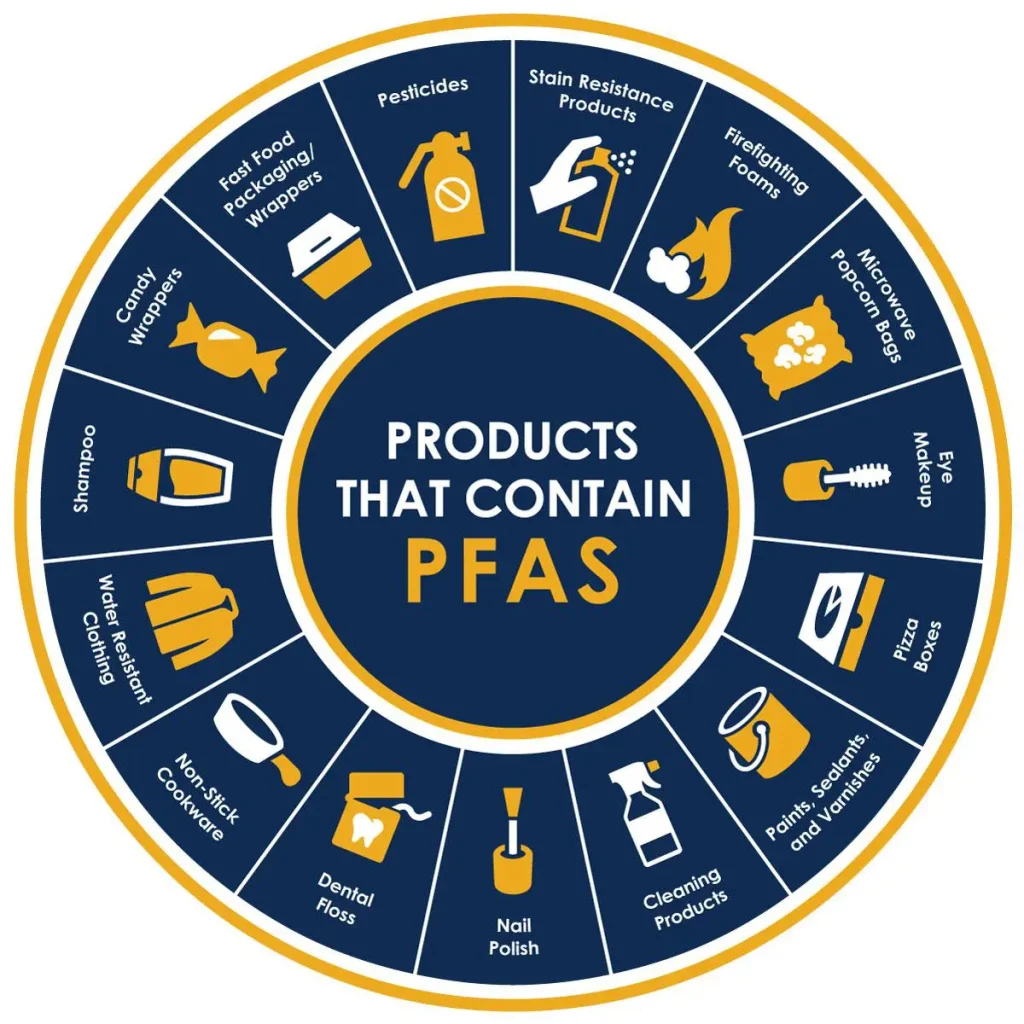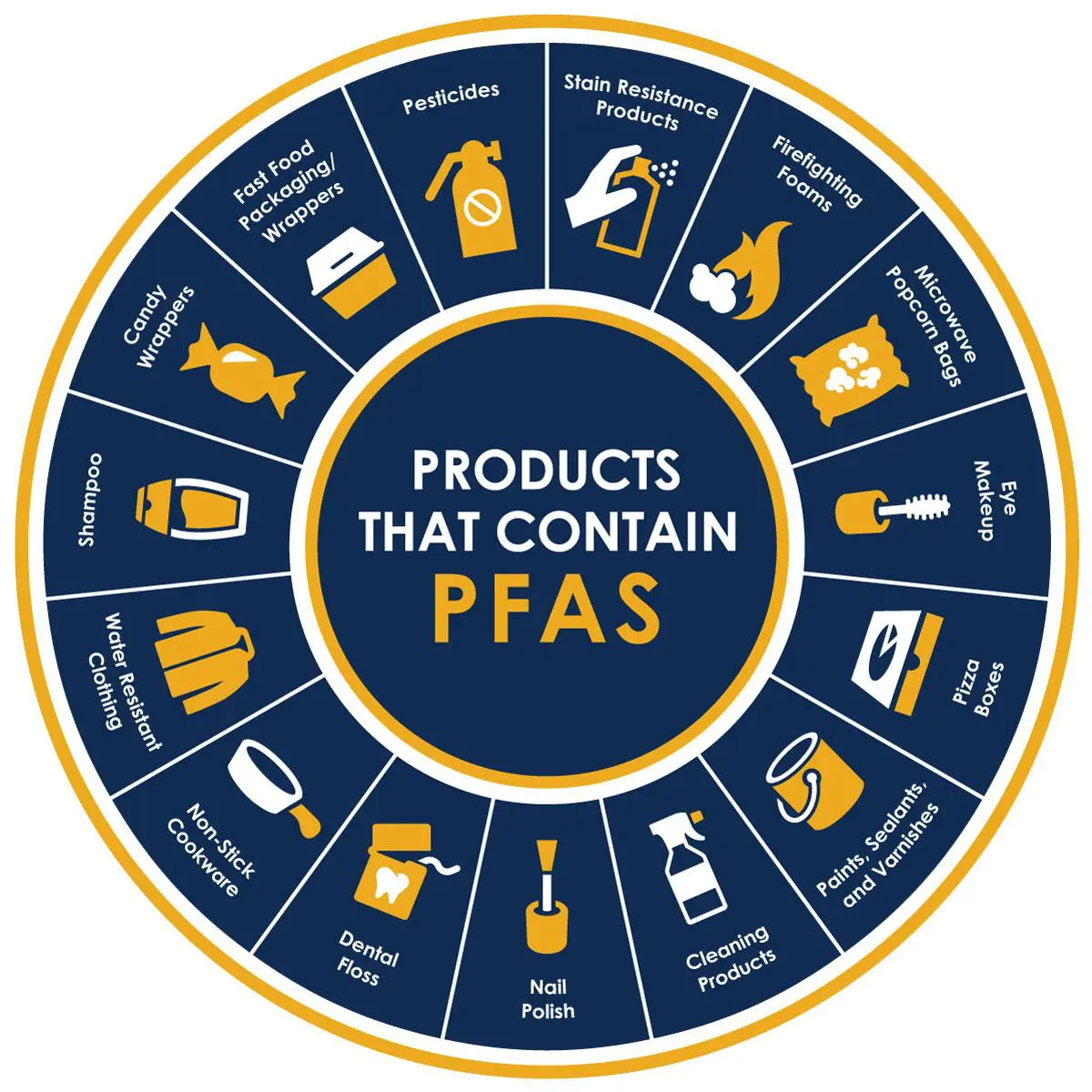PFOA And PFOS Substances Designated As Hazardous Under CERCLA
February 4, 2025 by Susan MohrIntroduction To PFAS And The Role Of EPA
Per- and polyfluoroalkyl substances (PFAS) are a group of man-made chemicals that have been used in various industrial and consumer products since the 1940s. Known for their resistance to water, grease, and stains, PFAS have found applications in numerous industries, including firefighting foams, nonstick cookware, water-repellent fabrics, and food packaging. Despite their widespread use and beneficial properties, PFAS have come under increasing scrutiny due to their persistence in the environment and potential risks to human health.
Common variants of PFAS, such as perfluorooctanoic acid (PFOA) and perfluorooctanesulfonic acid (PFOS), have been linked to adverse health outcomes, including cancers, immune system effects, and developmental issues in children.

In response to these concerns, the United States Environmental Protection Agency (EPA) plays a crucial role in regulating PFAS and protecting public health and the environment. The EPA is responsible for identifying, evaluating, and developing regulations for hazardous substances under laws such as the Comprehensive Environmental Response, Compensation, and Liability Act (CERCLA), commonly known as Superfund. The designation of PFAS compounds like PFOA and PFOS as hazardous substances under CERCLA represents a significant regulatory action aimed at managing and mitigating their spread.
This measure enables the EPA to prioritize clean-up processes, hold responsible parties accountable, and contribute to restoring contaminated sites across the country, ensuring a safer environment for future generations.
Understanding The Hazards Of PFOA And PFOS
Perfluorooctanoic acid (PFOA) and perfluorooctane sulfonate (PFOS) are synthetic chemicals that have attracted significant concern due to their persistence in the environment and potential adverse health effects. These substances, part of a larger group known as per- and polyfluoroalkyl substances (PFAS), have been widely used in industrial applications and consumer products such as non-stick cookware, water-repellent clothing, and firefighting foams. One of their defining characteristics is their strong carbon-fluorine bonds, which make them resistant to degradation, thereby persisting in the environment and accumulating in the bodies of animals and humans over time.
Scientific studies have linked PFOA and PFOS exposure to a range of health problems, including developmental issues in children, increased risk of certain cancers, liver damage, immune system effects, and thyroid hormone disruption. Because these chemicals can contaminate soil and water sources, they pose a significant environmental and public health challenge. The difficulty in breaking down PFOA and PFOS once they enter ecosystems compounds their hazardous nature.
Regulatory efforts to classify these substances as hazardous under laws like the Comprehensive Environmental Response, Compensation, and Liability Act (CERCLA) aim to mitigate their effects by improving management, cleanup, and accountability efforts. Understanding these hazards is crucial for effectively minimizing exposure and implementing safer chemical alternatives.
Overview Of Cercla And Its Purpose
The Comprehensive Environmental Response, Compensation, and Liability Act (CERCLA), commonly known as Superfund, was enacted by the U.S. Congress in 1980. Its primary aim is to safeguard public health and the environment from the dangers posed by hazardous waste sites. CERCLA grants the federal government the authority to respond directly to the release or threatened release of hazardous substances that may endanger public health or the environment.
One of the key facets of CERCLA is that it provides for the clean-up of such sites and establishes a trust fund, financed by a tax on the chemical and petroleum industries, to carry out remediation efforts when responsible parties cannot do so.
CERCLA is unique because it imposes a strict liability regime, meaning that responsible parties—those who have contributed to or are otherwise associated with the contamination—can be held liable for cleanup costs regardless of fault or negligence. This incentivizes companies to manage hazardous substances to avoid potential liability properly. Additionally, CERCLA mandates the Environmental Protection Agency (EPA) to create a National Priorities List (NPL), identifying sites in the U.S. that pose significant environmental or health risks, thereby prioritizing them for cleanup efforts.
The act is crucial for ensuring long-term protection against contamination and fostering the remediation of polluted sites to restore community safety and environmental health.
Details Of The New EPA Rule On PFOA And PFOS
The Environmental Protection Agency (EPA) has taken a significant step in addressing the growing concerns over per- and polyfluoroalkyl substances (PFAS) by proposing a new rule to designate perfluorooctanoic acid (PFOA) and perfluorooctanesulfonic acid (PFOS) as hazardous substances under the Comprehensive Environmental Response, Compensation, and Liability Act (CERCLA), commonly known as Superfund. This move underscores the agency’s commitment to safeguarding public health and the environment from the enduring and pervasive effects of these chemicals.
PFOA and PFOS, which have been widely used in various industrial and consumer products for their resistance to water, grease, and stains, have been linked to adverse health effects such as cancer, immune system impacts, and developmental delays. By categorizing these substances as hazardous under CERCLA, the EPA aims to improve the ability to respond to contamination incidents and facilitate the cleanup of contaminated sites.
The new rule will require parties responsible for releases of PFOA and PFOS to report and manage contamination, thus enabling more transparent oversight and accountability. This designation also empowers the federal government to seek cost recovery for cleanup efforts from responsible parties, ensuring that those contributing to the pollution bear the financial burden of remediation. Through this decisive regulatory action, the EPA is working to mitigate the risks associated with PFAS and enhance regulatory frameworks to protect communities better nationwide.
Implications For Industry And Environmental Cleanup
The EPA’s designation of PFOA and PFOS as hazardous substances under CERCLA carries significant implications for industries and environmental cleanup efforts. For sectors, particularly those involved in manufacturing, waste management, and water treatment, this new rule necessitates reevaluating current practices to ensure compliance with stricter regulations. Companies may need to invest in alternative technologies or materials to reduce or eliminate the use of these substances in their processes.
Additionally, industries could face increased liability for past contamination, compelling them to undertake detailed environmental assessments and potential remediation at affected sites. These measures could result in substantial financial implications, ranging from compliance costs to legal expenses.
From an environmental cleanup perspective, the rule strengthens the framework for remediating contaminated sites. It provides a clearer path for federal and state agencies to prioritize and address PFAS contamination, promoting more aggressive cleanup actions. The hazardous designation also empowers communities affected by PFAS pollution to hold parties accountable, potentially accelerating cleanup timelines. Moreover, the rule fosters innovation in remediation technologies as the demand for effective solutions to manage and remove these persistent chemicals from the environment surges.
Overall, the new rule aims to mitigate the long-term environmental and health impacts of PFAS, fostering a balance between industrial activities and ecological preservation.
Public And Environmental Advocacy Responses To The Rule
The EPA’s decision to designate PFOA and PFOS as hazardous substances under CERCLA has sparked a mix of responses from public and environmental advocacy groups. Many environmental organizations have applauded the rule as a crucial step towards addressing the widespread contamination caused by these persistent chemicals. Advocates argue that the designation will empower communities to hold polluters accountable, facilitate the cleanup of contaminated sites, and ultimately reduce the exposure risks to human health and the environment.
Public health advocates have similarly praised the move, emphasizing the potential health benefits of regulating substances linked to cancer, immune system deficiencies, and other severe health issues.
On the other hand, some industry stakeholders and their supporters have expressed concerns about the potential economic repercussions of the rule. They argue that the designation could lead to increased liability and cleanup costs for businesses, potentially impacting economic growth and leading to job losses. Despite the dissent, environmental and public health advocates maintain that the long-term benefits of safeguarding public health and the environment outweigh the immediate economic concerns.
They stress the importance of prioritizing community safety and environmental integrity. Many advocacy groups continue to urge the EPA to expand regulations on other harmful PFAS chemicals further, highlighting the necessity of comprehensive policies to tackle the broader issue of chemical contamination.
Click the link below, learn more about us, and book a call.
https://calendly.com/mohrmarketing
For more information about our PFAS campaign, contact us at te**@******tg.com.
CONTACT US FOR A QUOTE. CALL 866-695-9058 OR USE OUR REQUEST A QUOTE FORM.
Susan Mohr
Mohr Marketing, LLC
CEO and Founder


Recent Posts
- Proposed Legal Reforms For Expanding Liability
- Pharmaceutical Errors & Legal Implications
- Motor Vehicle Accidents Relating To Autonomous Vehicles
Categories
- Business Financing
- Call Verified MVA Leads
- Compliance Program
- Lead Generation For Chiropractors
- Lead Generation For Criminal Attorneys
- Lead Generation For D&A Treatment Centers
- Lead Generation For Eye Doctors
- Lead Generation For Family Law Practices
- Lead Generation For PI Law Firms
- Lead Generation For Plastic Surgeons
- Leads For Healthcare Professionals
- Leads For Insurance Industry
- Legal Leads
- Legal Updates
- Mass Tort Leads
- Medicare and Medicaid Leads
- Merchant Funding Leads
- Online Marketing Strategies
- Pre-Settlement Funding
- Signed MVA Cases
- Tort Updates
Archives
Copyright © 2024 Mohr Marketing, LLC. All Rights Reserved.


